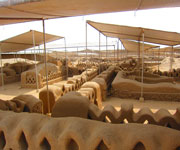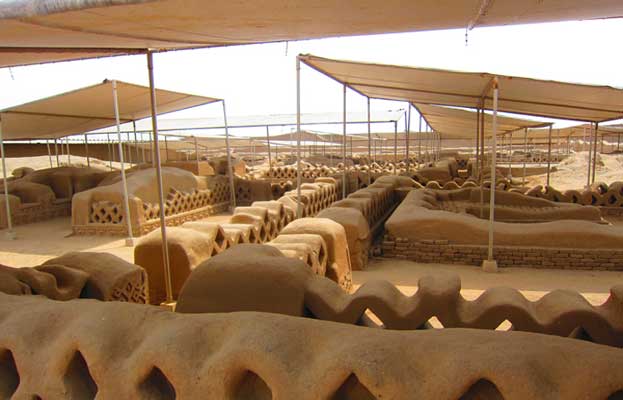The Chimu Kingdom, with Chan Chan as its capital, reached its apogee in the 15th century, not long before falling to the Incas. The planning of this huge city, the largest in pre-Columbian America, reflects a strict political and social strategy, marked by the city's division into nine 'citadels' or 'palaces' forming autonomous units. The Chimu Kingdom reached its apogee in the 15th century, not long before falling to the Incas. Its capital Chan Chan, located in the once fertile river valley of Moche or Santa Catalina, was the largest earthen architecture city in pre-Columbian America. The remains of this vast city reflect in their layout a strict political and social strategy, emphasized by their division into nine 'citadels' or 'palaces' forming independent units. In 1986 the Chan Chan Archaeological Zone Peru inscribed as UNESCO World Heritage Sites and now it is in danger list.

Continent: South America
Country: Peru
Category: Danger List
Criterion: (I)(III)
Date of Inscription: 1986
The monumental zone
The Outstanding Universal Value of Chan Chan resides in the extensive, hierarchically planned remains of this huge city, including remnants of the industrial, agricultural and water management systems that sustained it. The monumental zone of around six square kilometres in the centre of the once twenty square kilometre city, comprises nine large rectangular delineated by high thick earthen walls. Within these units, buildings including temples, dwellings and storehouses are arranged around open spaces, together with reservoirs, and funeral platforms.
 |
| Chan Chan Archaeological Zone Peru |









No comments:
Post a Comment